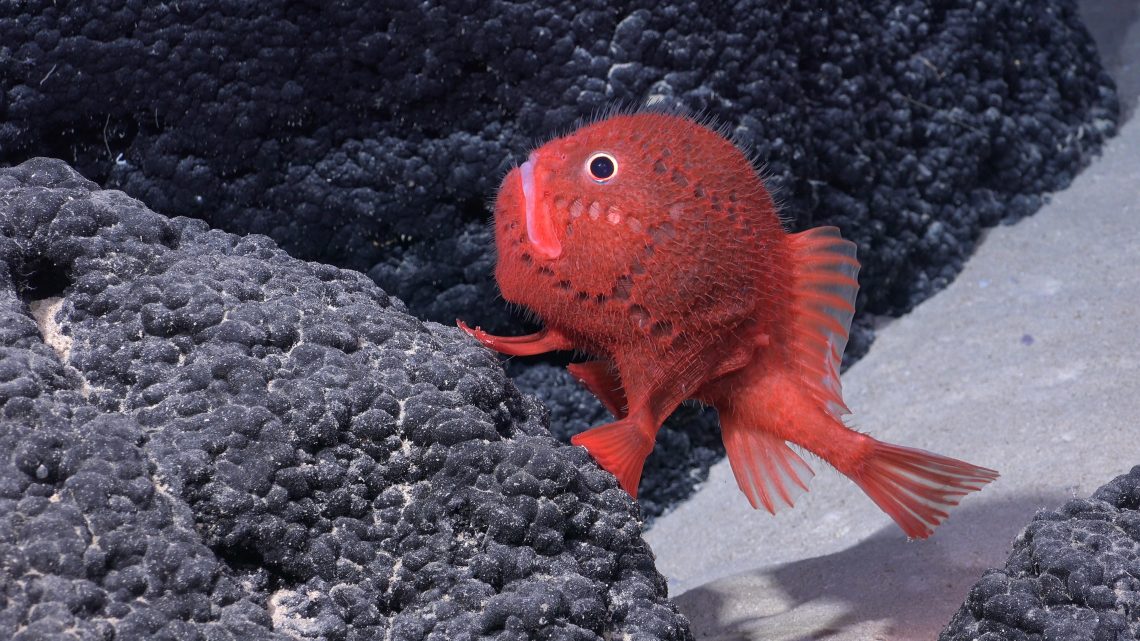Microbes in oxygen minimum zones
Oceanic oxygen-depleted water masses, commonly called oxygen minimum zones or OMZs, are naturally occurring places in the mesopelagic zones of all ocean basins. They are often the result of imbalances between biological oxygen demand and physical ventilation. The Eastern Tropical South Pacific OMZ, off the coast of Chile and Peru, is estimated to occupy an area that equals the size of China; it is the second largest OMZ on Earth. While these areas of the Ocean have been described as dead zones, they are bustling with microbial life. To characterize the microorganisms living in OMZs, Dr. Maria Pachiadaki of the Woods Hole Oceanographic Institution, U.S., assembled an international team, including Dr. Laura Bristow of the University of Gothenburg, Sweden, and a team of Chilean scientists led by Dr. Osvaldo Ulloa of the University of Conceptión, to test new instruments in the Eastern Tropical Pacific Oxygen Minimum Zone.
Scientific knowledge of microbial life in OMZs is limited and potentially flawed. Until recently, there was no instrumentation for detecting trace amounts of oxygen and for studying these microbial processes in their natural environment. Many of the tools used for studying OMZs result in samples becoming contaminated with oxygen before reaching the surface. The team tested technologies to detect trace amounts of oxygen in the water column and to improve our understanding of microbes and other organisms in OMZs, including the Submersible Incubation Device. This automated mini-laboratory collects and processes seawater samples in situ at specified depths to study biogeochemical processes while accurately measuring oxygen. The team also used a Microbial Sampler to examine the genomic blueprint of the microorganisms and the Pump Profiling System to collect high-resolution nutrient profiles in the water column. While OMZs are naturally occurring, they are thought to be growing due to climate change; data collected during this expedition will help create better regional models to predict what will happen to OMZs as the climate changes.The expedition took place from 12 April to 15 May 2024.

Unexplored seamounts of the Salas y Gómez Ridge
On April 4, an international group of scientists completed a 40-day research expedition along the Salas y Gómez Ridge, a biologically rich but understudied region. The research team led by Drs. Erin Easton of the University of Texas Rio Grande Valley, U.S., and Javier Sellanes of the Universidad Católica del Norte, Chile, closely examined ten seamounts on this 2900-kilometer-long oceanic mountain range. They determined that the individual seamounts harbor distinct ecosystems, making a case for protecting the entire ridge.
During this expedition, scientists observed 160 species never-before-seen on the Salas y Gómez Ridge and suspect that at least 50 are new to science. At 197-meter depth, the team found the deepest-known occurrence of a Leptoseris coral, a photosynthesizing animal with symbiotic algae. The ridge is one of several global locations under consideration for designation as a high seas marine protected area upon ratification of the UN High Seas Treaty, and researchers believe the data collected during these expeditions will advance this effort to protect an essential area of our global Ocean. The Guardian, BBC Discover Wildlife, Newsweek, Astrobiology, and other media outlets covered this expedition. The expedition took place from 24 February to 4 April 2024.

Seamounts of the Southeast Pacific
An international group of scientists, led by Dr. Javier Sellanes of the Universidad Católica del Norte, Chile, may have discovered more than 100 new species living on underwater mountains off the coast of Chile. The Seamounts of the Southeast Pacific Expedition team explored the Nazca, Salas y Gómez, and Juan Fernández Ridges, resulting in the identification of deep-sea corals, glass sponges, sea urchins, amphipods, squat lobsters, and other species likely new to science.
During the expedition, scientists used ROV SuBastian to explore seamounts along the ridges, both inside and outside Chile’s jurisdiction, to collect data that could support the designation of an international high-seas marine protected area. Additionally, the scientists explored two of Chile’s marine protected areas, the Juan Fernández and Nazca-Desventuradas Marine Parks, where they observed thriving and healthy ecosystems that indicate the parks effectively protect delicate marine habitats.
The scientists are analyzing the physiology and genetics of the specimens to confirm if they are new to science. While complete species identification can take many years, the potential discoveries generated great excitement; ABC News, Washington Post, SkyNews, Unilad, Yahoo News Singapore, The Independent, PBS NewsHour, and more covered this expedition. The expedition took place from 8 January to 11 February 2024.

We invite you to share the newsletter with your friends and encourage them to subscribe, so they do not miss our first look at Schmidt Ocean Institute’s activities.
Chapter 7 Newsletter – 2024 • Menu
Subscribe to our quarterly newsletter
